There is a certain rhythm to fashion that mirrors the pulse of the world around it. In the case of Won Hundred’s Autumn/Winter 2025 collection, that rhythm was literal: a steady, unrelenting beat from a DJ perched at the center of an industrial space, the music reverberating through the raw, warehouse setting.
The atmosphere was charged and unpolished, much like the collection itself, which explored the cyclical relationship between collapse and reconstruction. It was a statement on the duality between rigidity and fluidity.
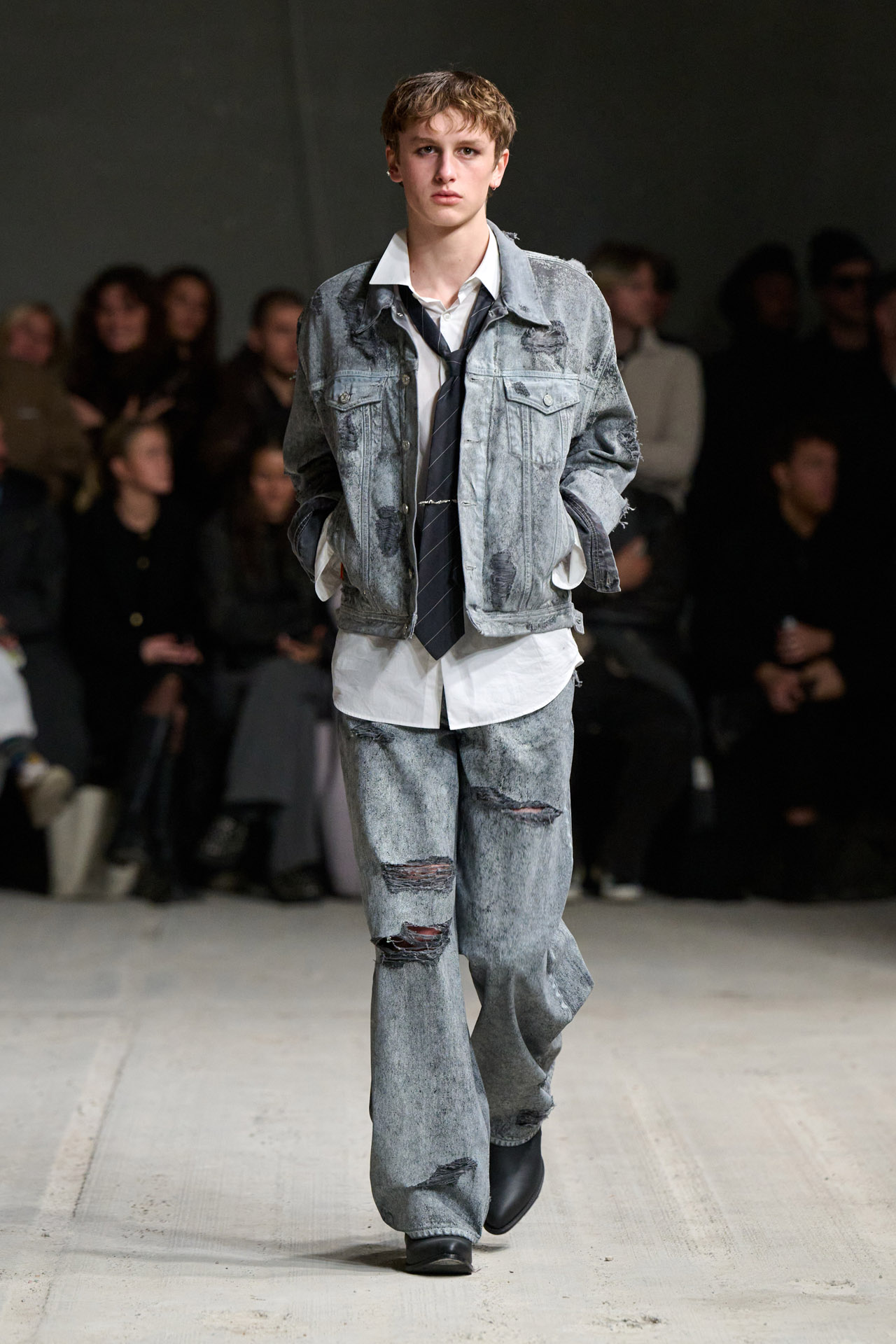
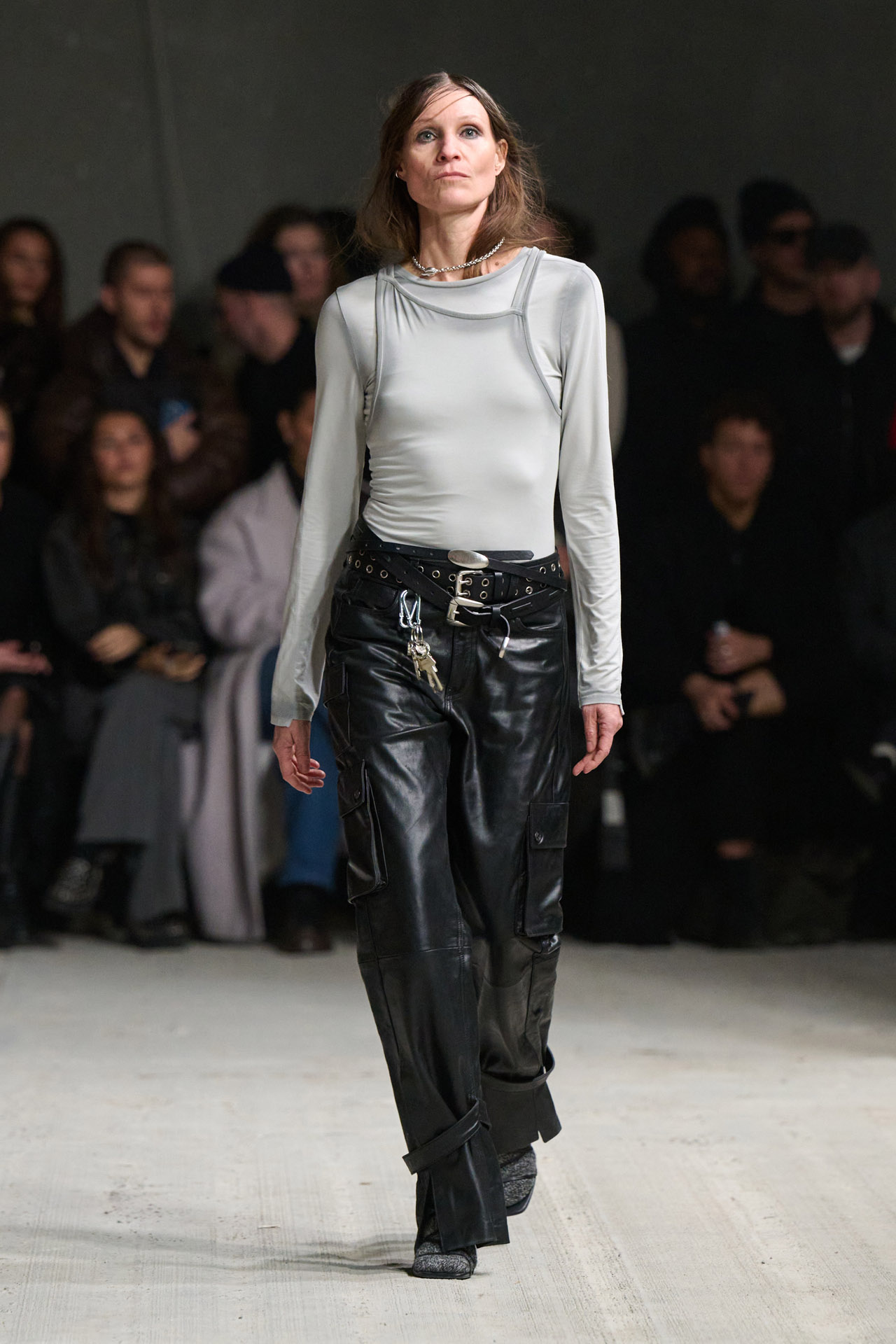
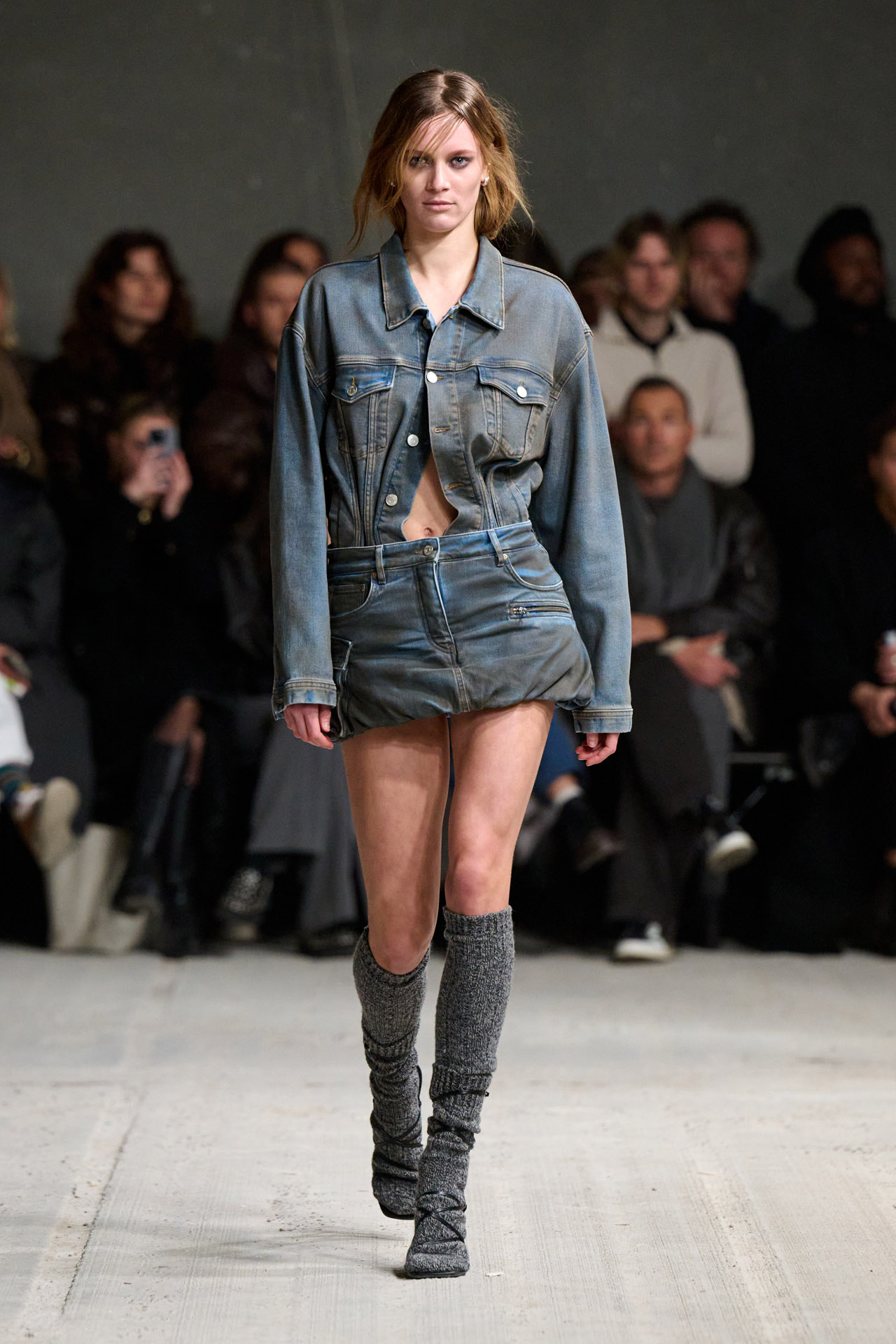
Denim has long been Won Hundred’s cornerstone, and here, it was dirty, distressed, aged. It dominated some looks entirely, played a supporting role in others, and at times, was absent altogether, making its presence even more poignant. The fabric’s treated and worn-in appearance reinforced the collection’s theme of destruction and renewal, speaking to a greater industry-wide conversation about fashion’s relationship with permanence and decay.
The color palette was almost melancholic, with cold, dark hues that mirrored the Copenhagen sky. Where Spring/Summer 2025 had explored some warmth and lightness, this was a stark contrast: deep blues, charcoals, and blacks dominated, emphasizing the severity of the season. The collection felt as though it was crafted not just for winter, but for an eternal state of emotional winter, where garments become armor against both the weather and the weight of the world.
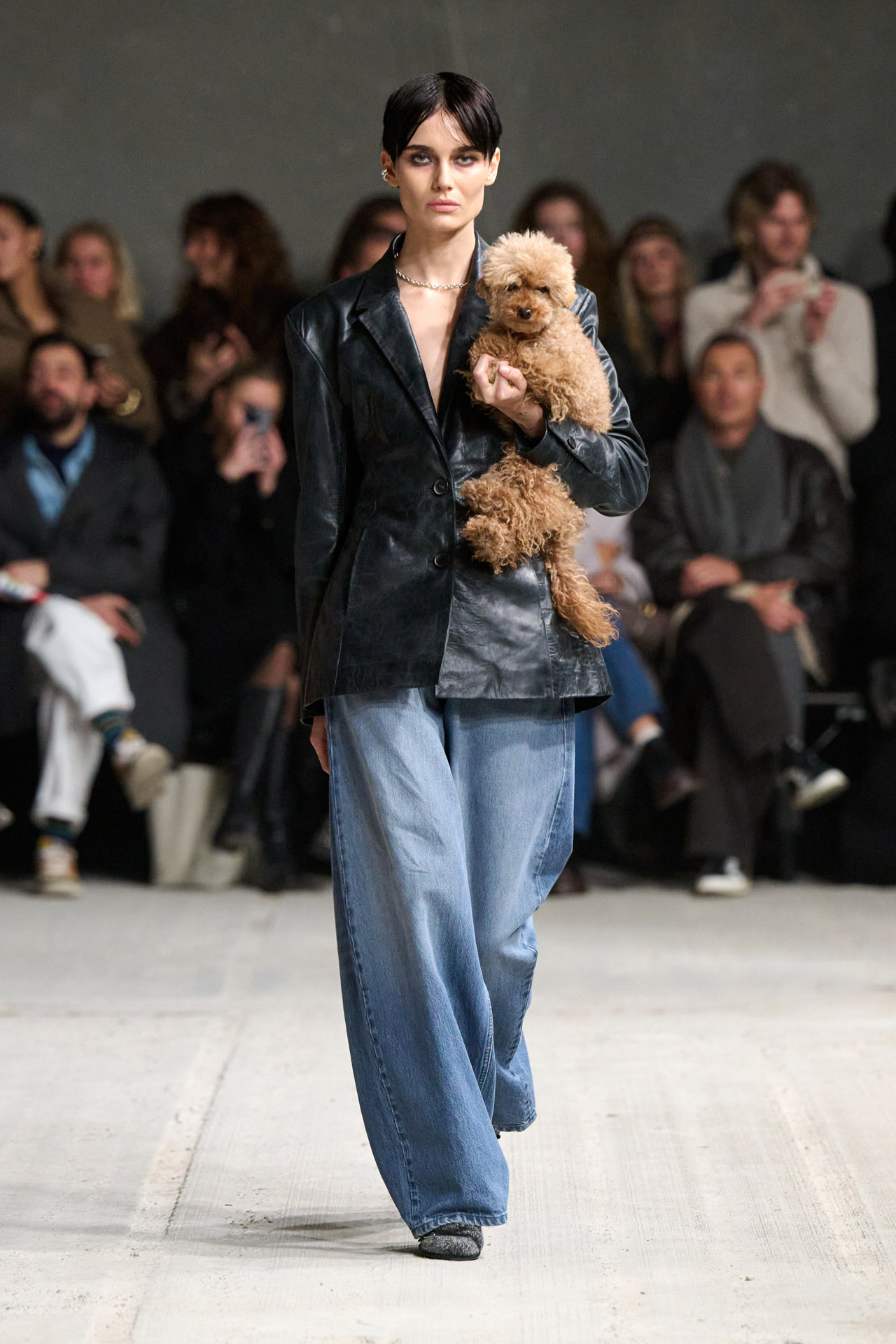
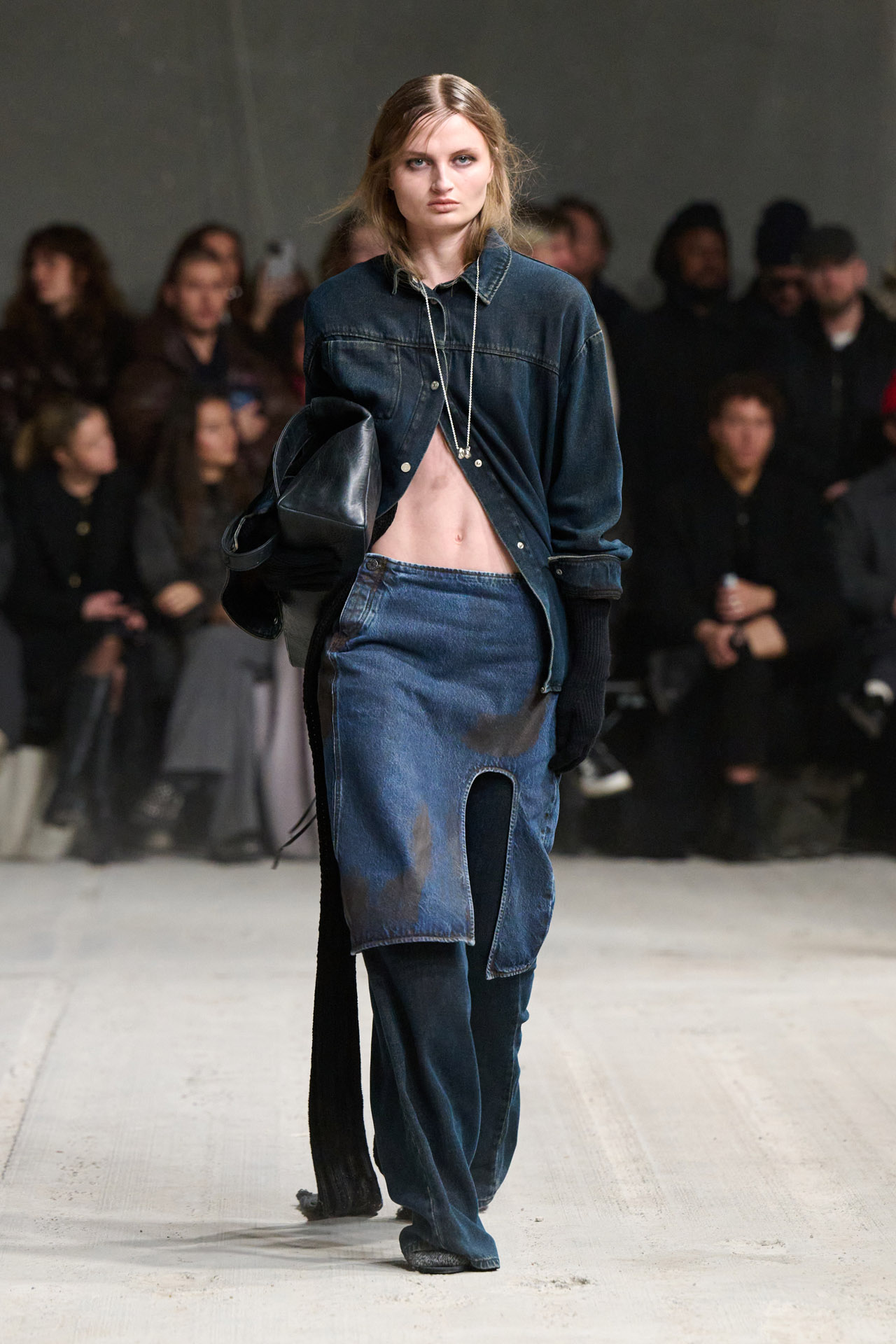
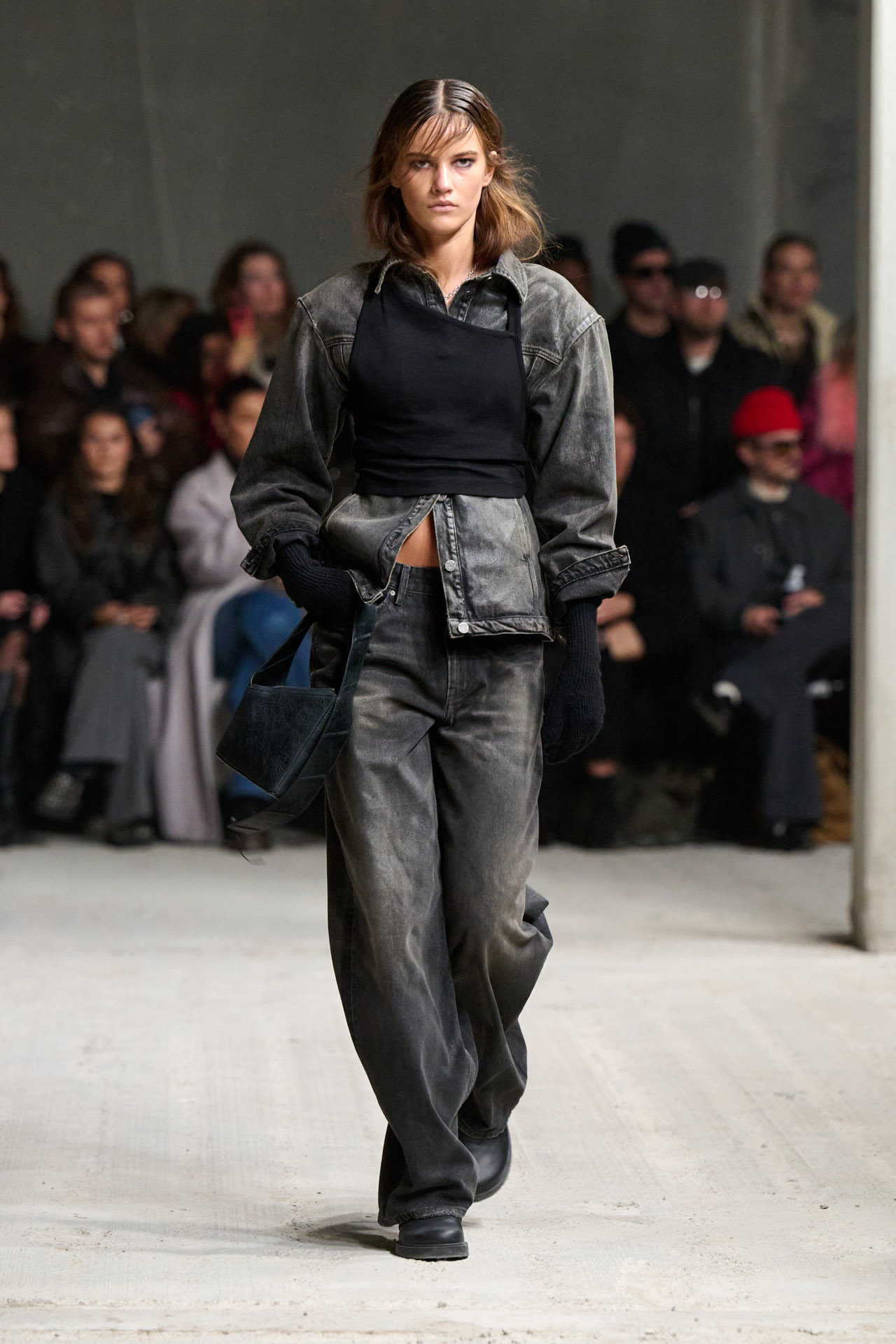
The styling choices carried an intentional sense of disorder. Hair was tucked into collars and left disheveled. Ties, traditionally a symbol of order, were held by tie bars and loosely knotted. Keychains dangled from belts, a motif of utility and urban life, while hands were encased in knitted gloves that softened the harsher elements of leather and structured denim. Footwear was equally dichotomous: black boots and leather slides sat alongside delicate strappy heels worn with thick knitted socks, blurring the lines between ruggedness and refinement. At one point, a model walked out holding a puppy (what looked like a toy poodle), injecting an unexpected moment of vulnerability into an otherwise rigid aesthetic, and the audience’s faces lit up with joy.
This season marked a shift in Won Hundred’s design leadership, as Creative Director Nikolaj Nielsen was joined by new Head of Design, Katrine Lund Hansen. With a more pronounced emphasis on womenswear, the collection acknowledged the brand’s evolving identity, albeit without straying from its roots. While silhouettes and treatments felt familiar, there was an evident effort to refine and build upon past iterations rather than revolutionize them.
On the other hand, while Danish fashion is further ahead on its stance on inclusivity compared to others, the runway reflected only a modest step in that direction. With just two older models and one plus-size model cast, it felt like a missed opportunity to further the conversation on representation that was very much present at panels throughout the city. Additionally, while the individual pieces were undeniably wearable, the show lacked a truly defining moment, puppy excluded.
Overall, Won Hundred’s AW25 collection was a reflection of the world’s current state rather than an escape from it. It was a collection that felt instinctively right for the brand. But in a season where fashion followers are yearning for something to break the mold and to shake the foundation, Won Hundred played it safe within its own aesthetic universe. The beauty lays in the details, the textures, the intentional roughness, but I do wonder if this brand, rooted so deeply in denim and structure, will find a way to disrupt itself in a way that feels truly revolutionary.

